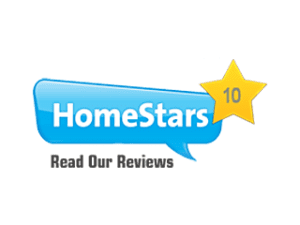Aspergillus Latus – A mold hybrid pathogen that can cause disease in humans.
 A.Latus
A.Latus
Aspergillus Latus – A mold hybrid pathogen that can cause disease in humans.
A particular species of mold, (Aspergillus Latus / A.Latus), was found for the first time and has been confirmed to be a hybrid, (the merging of), two distinct organisms. This particular species is of interest because it directly causes human diseases.
A pair of evolutionary biologists have been trying to understand why certain fungi infect hundreds of thousands of patients each year while others are harmless,(https://mapleleafmold.ca/can-i-get-a-fung…ection-from-mold/) . They are particularly interested in infections caused by Aspergillus fungi, a group of molds – multicellular fungi that typically grow by forming networks of hairlike filaments – that can cause very serious infections in patients with weak immune systems. While examining Aspergillus strains isolated from young patients with lung-related diseases, (https://mapleleafmold.ca/mold-in-our-schools/) they unexpectedly discovered an Aspergillus hybrid that infects humans, (A.Latus). This finding is significant not only because this is the first known example of a hybrid mold infecting humans but also because accurate identification of the species causing disease is key for managing fungal infections
While these A. Latus appeared benign researchers looked at its DNA to solve a puzzle
For the last few years, a team at Vanderbilt University, Gustavo Goldman’s team at São Paulo University in Brazil and many other collaborators around the world have been collecting samples of fungi from patients infected with different species of Aspergillus molds. One of the species they were particularly interested in is Aspergillus nidulans, a relatively common and generally harmless fungus. Clinical laboratories typically identify the species of Aspergillus causing the infection by examining cultures of the fungi under the microscope. The problem with this approach is that very closely related species of Aspergillus tend to look very similar in their broad morphology or physical appearance when viewing them through a microscope.
Interested in examining the varying abilities of different A. nidulans strains to cause disease, they decided to analyze their total genetic content, or genomes. What they saw came as a total surprise. They had not collected A. nidulans but Aspergillus latus, a close relative of A. nidulans and, as they were to soon find out, a hybrid species that evolved through the fusion of the genomes of two other Aspergillus species: Aspergillus spinulosporus and an unknown close relative of Aspergillus quadrilineatus. Thus, they realized not only that these patients harbored infections from an entirely different species than we thought they were, but also that this species was the first ever Aspergillus hybrid known to cause human infections.
Just like yeasts this mold hybrid causes human disease
There are a few other hybrid mold species that can cause infections in humans and are well known to occur in several different lineages of single-celled fungi known as yeasts. Notable examples include multiple different species of yeast hybrids that cause the human diseases cryptococcosis and candidiasis. Although pathogenic yeast hybrids are well known, their discovery that the A. latus pathogen is a hybrid is a first for molds that cause disease in humans.

Why certain Aspergillus species are so deadly while others are harmless remains unknown. This may in part be because combinations of traits, rather than individual traits, underlie organisms’ ability to cause disease. So why then are hybrids frequently associated with human disease? Hybrids inherit genetic material from both parents, which may result in new combinations of traits. This may make them more similar to one parent in some of their characteristics, reflect both parents in others or may differ from both in the rest. It is precisely this mix and match of traits that hybrids have inherited from their parental species that facilitates their evolutionary success, including their ability to cause disease.
So, when it comes to hybrids, some are fantastic, some are helpful and some are dangerous (Aspergillus latus). Understanding more about the biology of Aspergillus latus may help in our understanding of how microbial pathogens arise and how to best prevent and combat their infections.




Maple Leaf Mold Inc. is a certified mold / asbestos removal and environmental air analysis company located in Toronto that uses certified IICRC technicians for all testing and remediation projects.
We are a professionally licensed firm experienced in testing, verifying and removing Mold / Asbestos / Lead and other environmental contaminants as well as providing disinfection services to control and kill biological contaminants.
Call 416-254-7256 to talk with us about your issue anytime.
